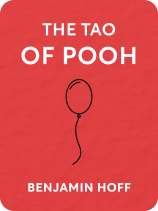

This article is an excerpt from the Shortform book guide to "The Tao of Pooh" by Benjamin Hoff. Shortform has the world's best summaries and analyses of books you should be reading.
Like this article? Sign up for a free trial here .
What is the tiddely pom, or tiddly pom? How does it work and what does Winnie-the-Pooh say about it?
The tiddely pom, sometimes known as tiddly pom, is from Winnie-the-Pooh. In The Tao of Pooh, the tiddely pom poem is used to illustrate a Taoist principle of building momentum in life.
Keep reading for a better understanding of the concept of “the more it snows,” tiddely pom, and The Tao of Pooh.
The More It Snows: Tiddely Pom and Principle #5
The Tiddely Pom Principle or the Tiddly Pom Principle, named after one of Pooh’s songs, is similar to the idea of the “Snowball Effect.” It relates to taking the first step of believing in yourself to allow the natural momentum of life to build toward happiness and contentment.
We all have something special and useful that we can offer the world. Often, we require some outward result or someone else to show us what our specialness is. But if you want to be the architect of your own life, you must find a way to believe in your power and learn how to wield it. You can use your gifts to make life work for you, rather than striving to be like others or waiting for fate to deliver what you want.
You are less likely to take risks when you don’t understand your power. You will come to unfamiliar circumstances with fear, and nothing new will be accomplished. This disbelief in your power makes you unable to believe in the power of the natural order of life, as well, and you miss out on opportunities to evolve.
An example from the world of Pooh expresses this concept.
Pooh and the gang went on an expedition to find the North Pole. Along the way, Roo fell into a rushing stream and was swept away. Everyone was too busy worrying about Roo or shouting out advice to do anything, except for Pooh. Pooh wondered if there was something he might be able to do that hadn’t been done before. As he wandered along the stream, he found a pole and picked it up. He decided to stretch the pole across the stream, and when Roo came up to it, he was able to climb out. Christopher Robin asked Pooh where he found the pole, to which Pooh responded he just saw it and thought it might be of some use. It was then that Christopher Robin realized that Pooh had found the North Pole. Like the concept of “the more it snows”, tiddely pom here is about gathering positive momentum.
Pooh, in his simple way of following the path before him, recognized that perhaps there was something in the environment around him that could help in this new situation. He believed he was capable of seeing what was around him and using it to serve his purpose. That first step started the snowball effect of positive action, which led to a positive result inspired by the Tiddely Pom poem.

———End of Preview———
Like what you just read? Read the rest of the world's best book summary and analysis of Benjamin Hoff's "The Tao of Pooh" at Shortform .
Here's what you'll find in our full The Tao of Pooh summary :
- How Winnie-the-Pooh perfectly models the principles of Taoism
- The 6 principles of Taoism reflected in Pooh's adventures
- How to become Winnie-the-Pooh and unlock a magic inside of you






